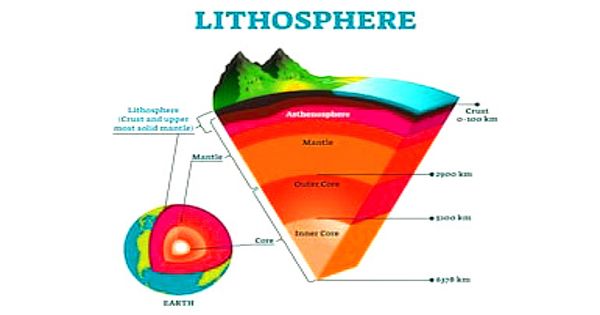Because the biological carbon pump is not “switched off” in winter, the Southern Ocean’s role in driving the global carbon cycle may be larger than previously imagined.
Scientists from Stellenbosch University’s Centre for Trace and Experimental Biogeochemistry (TracEx) in the Department of Earth Sciences were able to show that phytoplankton were active during the icy cold and dark winter months, based on the most comprehensive winter study to date, conducted in the Southern Ocean during July and August 2017.
These findings are critical for global climate models that are now based mostly on the spring and summer seasons. The models can now better depict the atmosphere-to-ocean carbon transfer cycle throughout seasons thanks to the addition of data from winter. This is a step advance for scientists in determining the sensitivity of this transfer to climate change.
Phytoplankton are minute, single-celled plant-like creatures that live in the ocean’s upper 100 meters. Phytoplankton converts carbon dioxide to organic carbon using sunlight for energy and dissolved inorganic nutrients. They are the foundation of the marine food chain. Phytoplankton has been found to be just as significant in changing the planet’s carbon and carbon dioxide cycle as all of the world’s land plants combined.
It is estimated to store about 75% of the global oceanic uptake of excess heat and 35% of the global uptake of excess carbon from the atmosphere. The Southern Ocean is also the only ocean that directly connects the three major ocean basins i.e. the Pacific, Atlantic, and Indian Oceans. In other words, what happens in the Southern Ocean has an impact on the global ocean.
Dr. Ryan Cloete
Dr. Ryan Cloete, a postdoctoral researcher in the department and first author of two recent papers on the subject, says their findings contradict the widely held belief that the Southern Ocean is biologically inactive throughout the winter.
“Akin to leaves falling off trees during autumn because of unfavorable growth conditions, the assumption was that phytoplankton would also not be active during the winter. One of our major findings is that phytoplankton are indeed active during winter in the Southern Ocean, although not to the levels we see in summer. How phytoplankton are able to adapt to winter conditions is not well understood, and our research on trace nutrients is the first step in figuring out these adaption strategies,” he explains.
Scientists have just a rudimentary knowledge of the circumstances that exist in the Southern Ocean throughout the winter. This is mostly owing to the difficulty of sampling an ocean in sub-zero temperatures while fighting gale-force winds and waves up to 20 meters high.
The “Roaring Forties,” followed by the “Furious Fifties” and the “Screaming Sixties,” were given to this region of the Southern Ocean between latitudes 40° and 60° south for a cause.
Dr Cloete says the Southern Ocean plays a fundamentally important role in regulating the earth’s climate: “It is estimated to store about 75% of the global oceanic uptake of excess heat and 35% of the global uptake of excess carbon from the atmosphere. The Southern Ocean is also the only ocean that directly connects the three major ocean basins i.e. the Pacific, Atlantic, and Indian Oceans. In other words, what happens in the Southern Ocean has an impact on the global ocean.”
Thermohaline circulation (‘thermos’ means heat, and ‘haline’ means salt) is what drives this worldwide process. Surface seawater sinks to the deep ocean in the poles, where it travels in massive ocean currents before eventually returning to the surface via mixing and wind-driven upwelling in the warmer latitudes.
The huge ocean conveyor belt, as scientists name it, can take water over a thousand years to complete the trek. As a result, the Southern Ocean serves as a primary hub for the modification and redistribution of inflowing waters throughout the world ocean.
Dr Cloete says the winter season in the Southern Ocean is extremely important for setting the biological stage for the spring and summer seasons: In winter, strong storms and winds serve to create a more unstable surface layer which penetrates beneath the stable summer surface waters, which are now depleted in nutrients after the growing season. This permits the water to mingle with the nutrient-rich subsurface waters. This winter surge of nutrients to the surface helps catalyze and sustain spring and summer phytoplankton blooms, which brings whales, dolphins, and penguins to the Southern Ocean smorgasbord from up north, thanks to greater sunshine hours and calmer waters.
“Observing winter systems is helping us understand various adaptation and survival strategies of phytoplankton under adverse growth conditions as well as nutrient recharge processes in extreme nutrient-depleted surface waters at the end of the summer season. This is extremely important as the Southern Ocean circulation hub dictates that these waters are transported northwards, influencing ocean productivity throughout much of the global low-latitude ocean,” he explains.
The findings reinforce the Southern Ocean’s worldwide role in controlling the climate and the marine food web, according to Prof Alakendra Roychoudhury, a specialist in environmental and marine biogeochemistry at SU and director of the TracEx research group:
“The earth system is intricately coupled through physical, chemical, and biological processes with self-correcting feedback loops to modulate variability and negate climate change. Our research is a prime example of this coupling where biochemical processes happening at microscopic level at the interface of water and microorganisms, is influenced by large scale ocean circulation and mixing.”
“It is hard to fathom that these microscopic processes can influence global processes like warming of our planet because often we lack the knowhow of the linked processes and their feedback response,” he concludes.
















